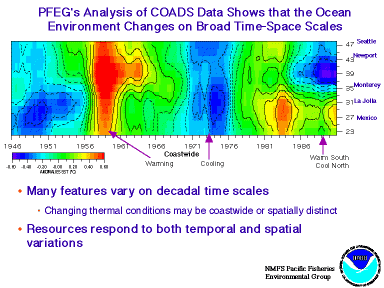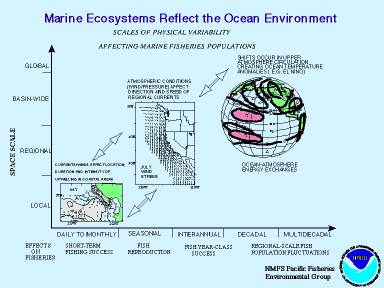
Pacific Fisheries Environmental Laboratory
Physical Oceanography
A great deal of the patterns and fluctuations observed in our living marine resources are attributable to the impact of physical processes in the environment on marine ecosystems and their components. For this reason, PFEL places a strong emphasis on research that examines the role of the physical environmental variability on marine ecosystems in general and commercially important fish stocks specifically. The objectives of the physical oceanography task are:- perform research on the temporal and spatial scales of environmental variability in eastern boundary current systems in relation to other marine ecosystems
- provide environmental input to SWFSC research programs, particularly the coastal groundfish program
- provide high quality marine information to the research community.
Expertise in physical oceanography at PFEG and the linkages to the Navy's Fleet Numerical Meteorology and Oceanography Center (FNMOC) and Naval Postgraduate School, as well as numerous other government, academic, and private research facilities, has historically meant that this task serves regionally, nationally and internationally as a resource to other ocean scientists. Within the SWFSC, many cooperative research programs have been developed and planned. As an example, the task provides physical oceanographic expertise to the Tiburon Laboratory Rockfish Recruitment surveys each spring, to relate ocean variability off central California to rockfish recruitment. PFEG physical oceanographers are asked frequently to attend workshop and present seminars as experts on environmental-fishery linkages, and represent SWFSC, NMFS and NOAA on numerous committees and working groups.

